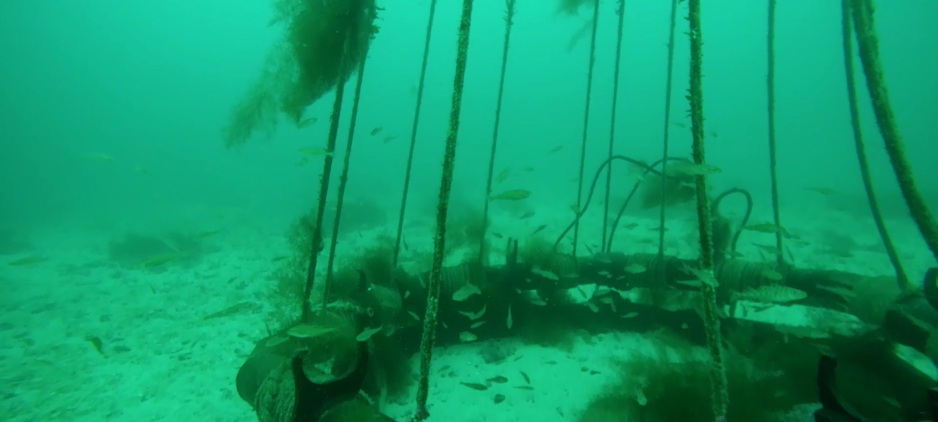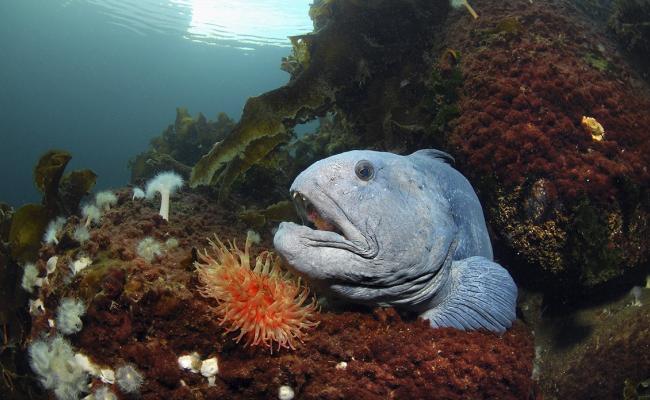Artifical Kelp Forests Have Major Impact

Both cod and pollock fry swam around the kelp that was placed in the Melkøy Sound. (Photo: the Norwegian Institute for Marine Research)
Artificial kelp forests were covered with real kelp just four months after researchers placed them in the Melkøy Sound in Northern Norway. The researchers also observed great amounts of cod and pollock fry around the units.
Due to a previous overfishing of the sea urchin's natural predators, such as catfish, cod, and haddock, the sea urchin has multiplied at a rapid pace. At the same time, it has grazed down the kelp forests from the coast north of Trøndelag and up to Kirkenes.
Kelp forests have a number of important functions. It serves as a home, spawning and hunting ground for many fish species. It also contributes to the absorption and storage of carbon, as well as sound absorption in areas with more noise due to increased shipping, for example.
Bellona estimates that around 50,000 tons of large fish are lost annually as a result of the sea urchin invasion, as kelp forests are a favorite breeding ground for fish fry. This especially applies to coastal stocks, and in several coastal communities, sea urchins are blamed for cod disappearing from the fjords.
Researchers have worked on finding solutions to this underwater catastrophe, including through the placement of artificial kelp forests in an attempt to establish 'biological hotspots.'
This past winter, ocean researchers from the Norwegian Institute of Marine Research placed artificial kelp forests in the Melkøy Sound outside Hammerfest, Northern Norway.
"They were covered in lush kelp just four months after we placed the final artificial kelp forests," says ocean researcher Hans Kristian Strand.
"This is record-time."
Fry
The artificial forests that were placed in the Melkøy Sound are placed at around 20 meters depth and stretched 10-15 meters upward.
"The artificially created kelp forests are meant as a starting aid. They will produce kelp spores, which can help seed new areas of kelp, and also offer nursery habitats for the young sea urchin predators, like the catfish. Perhaps larger catfish will also enjoy staying close to such areas," said Strand to High North News earlier this year.
At that point, the researchers had placed catfish in the artificial kelp forests as an additional measure.
However, the researcher can already see kelp growing on all the artificial units. In addition, they observed major amounts of cod and pollock fry around the structures.
The Norwegian Institute of Marine Research reports that the researchers will follow the development over time to see if the forests can function as biological hostpots for both kelp and fish.


